“I thought it would be nice to find the places it was filmed – I used to go out most weekends.”
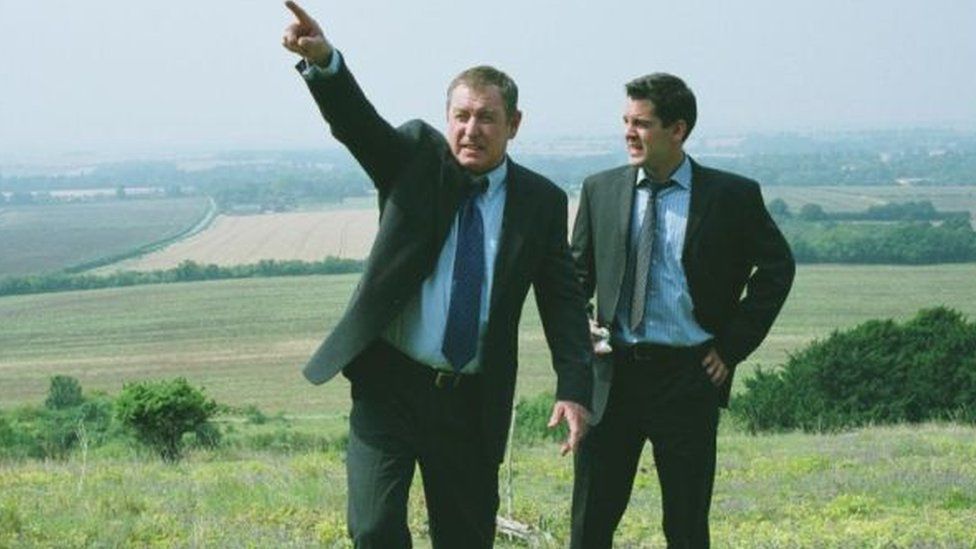
image copyrightVisit Bucks
With the UK’s tourism and hospitality sectors ravaged by the coronavirus pandemic, the county of Buckinghamshire has turned to an unlikely source of hope: its connections with a popular murder mystery programme. Why?
First aired in 1997, ITV’s Midsomer Murders is watched by millions of fans and syndicated worldwide.
Although the heart of the fictional crime drama is set in south Oxfordshire, a significant portion of the filming takes place in neighbouring Buckinghamshire.
The county’s tourism body hopes its three Midsomer Murder tours might be just the ticket for those seeking a little post-lockdown excursion.
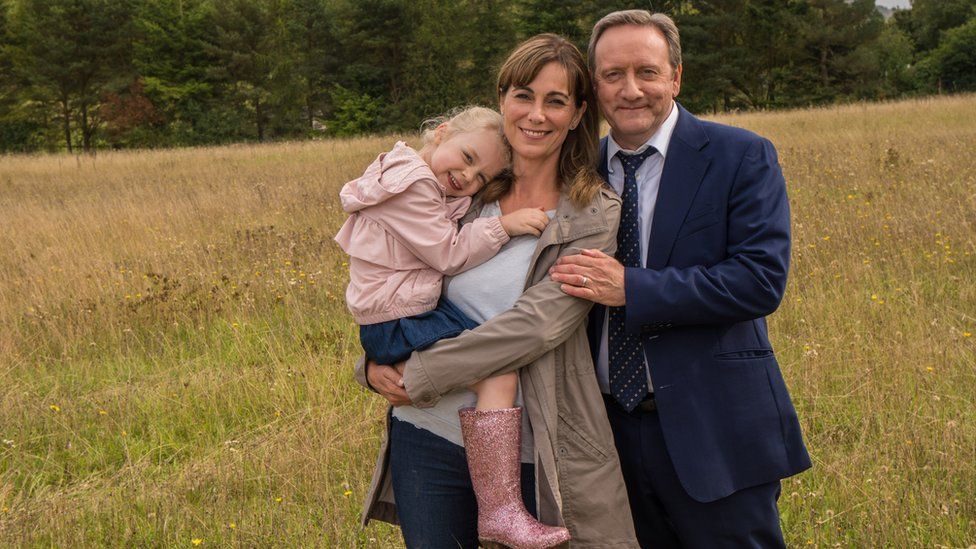
image copyrightITV
“Our businesses have had a torrid time so when it’s safe to do so we want to encourage people to explore,” says Lucy Dowson, Visit Buckinghamshire and the Chilterns’ tourism development manager.
“Lots of people will have watched Midsomer Murders in the past year and there is an appetite for locals to get out and for people to come from further afield when it’s safe.
“The TV programme gets people into the town centres which desperately need them.
“Once in somewhere like Marlow you may just forget about the show and be attracted by all the town has to offer.”
The tours – The Midsomer Marlow Trail, Midsomer on the Misbourne, and Step into Midsomer – feature various locations in which the detective programme has been filmed.
But do people actually watch a murder show on the television and then decide they have to get out of their homes to see where it was filmed?
Yes, it turns out, many do.
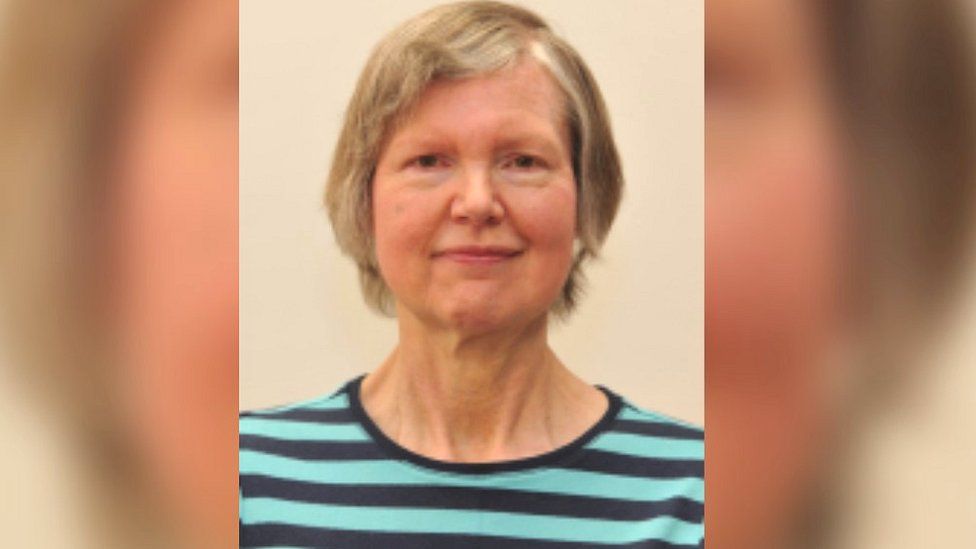
image copyrightJoan Street
Few if any have taken it quite as far as Joan Street who has been applying her own detective skills to track down the filming locations of Midsomer Murders for more than 20 years.
Her website is the product of her passion for the show and details more than 120 sites she has successfully identified.
“The show is very quirky and that’s what first drew me to it,” she says. “Then I thought it would be nice to find the various places it was filmed. I used to go out most weekends.”
For the London-based Ms Street, successfully pinpointing where an episode was filmed is “very exciting”.
Her email inbox is often jammed with fellow enthusiasts wanting advice or information about the show.
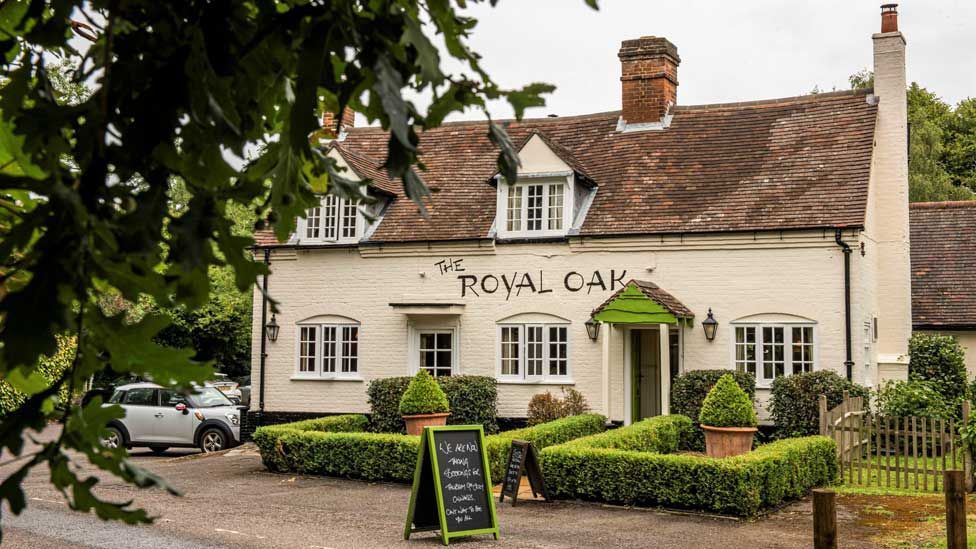
image copyrightThe Royal Oak
What do those who run such locations make of the idea of being part of a fictional murder trail?
Becky Salisbury owns the Royal Oak in Bovingdon Green, just outside Marlow. The hamlet’s dairymen’s cottages have featured in several episodes of the show.
Although knowing how many visitors she gets through the hamlet’s Midsomer connection is well nigh on impossible, she is hopeful it will help attract more people through her doors.
“At the moment everyone is desperate to have a laugh with their mates and we want to make sure that we are there to help them have a good time,” she says.
“Business is tough at the best of times and it’s been mega-tough in the last year so anything like this that helps it is a good thing and I’m very grateful to be part of it.
“Everyone drives along the M40 to the Cotswolds and bypasses the Chilterns, so this trail gives the area a chance to earn its rightful place [on the tourist trail]. It’s a beautiful part of the world.”
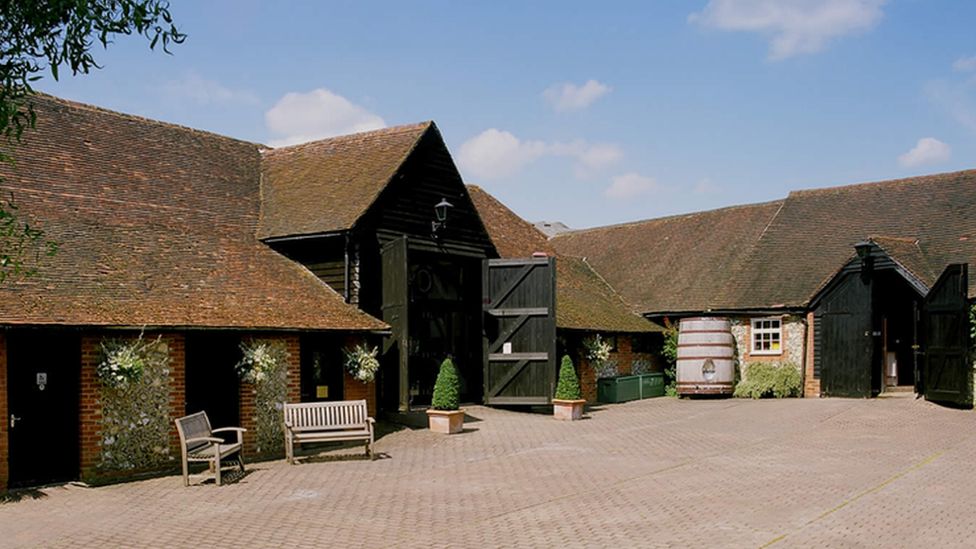
image copyrightChiltern Valley Winery & Brewery
Much of an episode called The Curse of the Ninth was filmed at the Chiltern Valley Winery and Brewery in October 2016.
The episode saw the winner of the fictional Thassington classical music festival strangled with a violin string and a valuable Stradivarius on loan to him stolen.
General manager Donald Ealand says being on the trail “definitely creates discussion and interest”.
“We get people coming in and asking about the episode and what happened when they were filming,” he says.
“All these things do help, particularly with international travel, and we often have people coming in with a leaflet.”
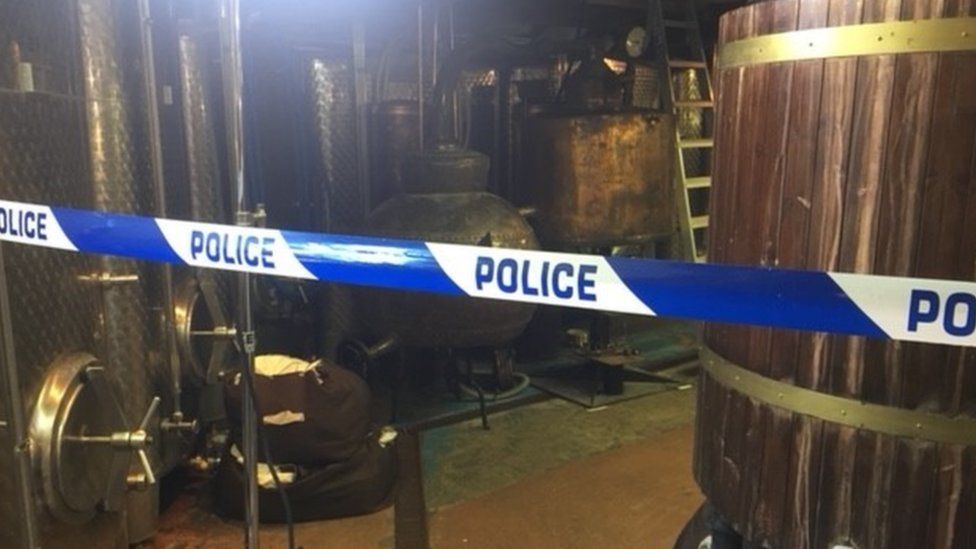
image copyrightChiltern Valley Winery and Brewery
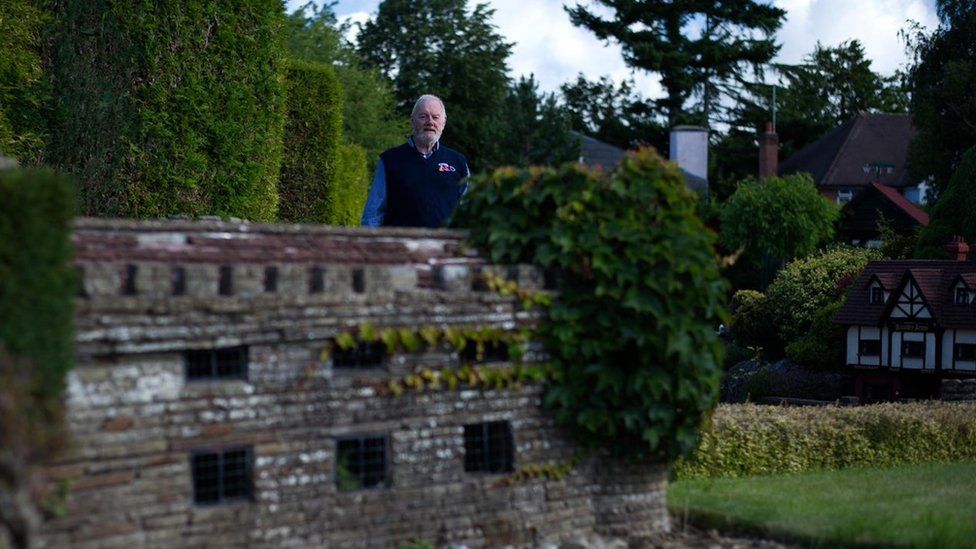
Brian Newman-Smith runs Bekonscot model village, a miniature world that captures 1930s England.
The attraction appeared in the 2009 episode Small Mercies when a murder victim was laid out like Gulliver in Lilliput amongst the tiny houses.
Mr Newland-Smith says being included in the trail can only be a good thing and they had already put a white outline of the body in the village to show where the “murder” happened to aid those “ardent viewers” he hopes will “come and see it”.
“It caused a lot of interest at the time and still does because the episode has been repeated and customers often say they saw us,” he says.
“It was good advertising then and still is now.”
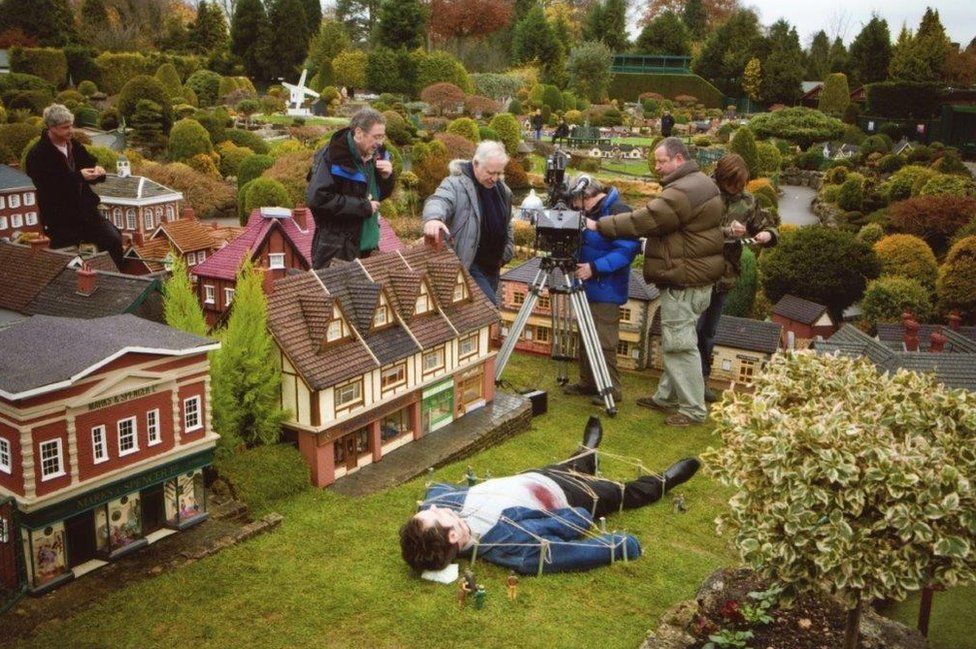
image copyrightBekonscot Model Village

Find BBC News: East of England on Facebook, Instagram and Twitter. If you have a story suggestion email eastofenglandnews@bbc.co.uk
The BBC is not responsible for the content of external sites.